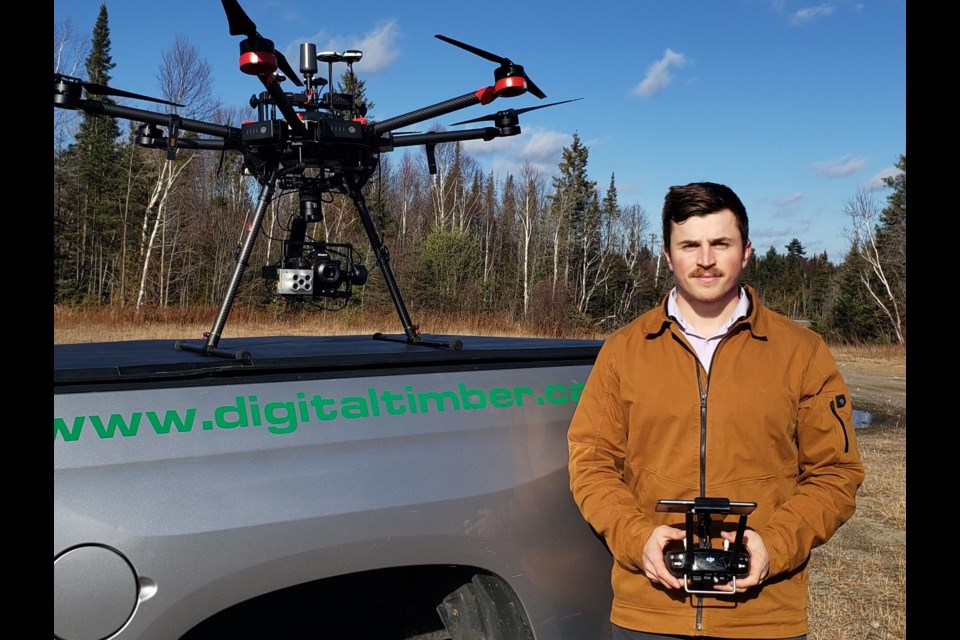A North Bay company is betting on state-of-the-art Finnish technology to bring precision and efficiency to forest management in Canada.
Digital Timber has signed a partnership agreement with Vantaa, Finland’s MosaicMill to become the North American licence holder for its proprietary tree-inventory software.
Used in conjunction with remotely piloted aircraft systems (RPAS) and high-end sensors, the software can gather detailed tree-inventory data, which clients can then use to better manage their forests.
Eric Rayner, Digital Timber’s general manager and lead field technician, said the company has collaborated with MosaicMill over the last two years to adapt the technology to work with Canadian woodlands.
“Finnish forests and Canadian forests are completely different, and when we went over to Finland, we learned they only have four types of (dominant) tree species over there,” Rayner explained.
“But when you come to the Canadian market, since there’s such a variable climate from southern Ontario way to up Northern boreal forest, the tree species are so different.”
Among the varieties the software can identify are jack pine, spruce, tamarack, poplar and birch. Eventually, Rayner said, the company wants to expand its database to include species like white pine, maple and red oak.
“We’re working to get all these species within the CDTI (Canadian domestic tree index) so that when we run the software, we can process all tree species all across Ontario, and hopefully Canada in the near future,” said Rayner.
He and partner Mark Cotnam got their start working for Aerial Best, which provides LiDAR and drone services for building and roof analysis, building modelling, and mapping and surveying.
Looking at branching out into environmental applications, the company came across the MosaicMill software, and Digital Timber was launched as an offshoot specifically to service the forest industry.
To date, the company has completed 20 projects, processing more than 500 hectares, and it’s now gained enough momentum that the business will break off as a separate company in the new year.
Their equipment is a Matrice DJI M600 drone, equipped with customized stabilizing technology that allows the drone to carry multiple sensors to provide high-resolution imagery, Rayner said.
Employing drone technology to manage forest inventory is not new, but using other data collection methods, like light detection and ranging (LiDAR) or satellite imagery, can be more expensive and less reliable, Rayner said.
Meanwhile, companies using traditional data-gathering methods will often study a section of forest to get a general idea of what species are there, and then apply that sample to an entire forest to estimate its full makeup, he noted.
Digital Timber’s approach provides more exact details about the number and types of species across an entire forest plot, along with individual characteristics about each tree, Rayner said.
“Using a drone, we have the best of both worlds: we’re flying out at the altitude that we get tons of detail on individual trees, as well as the ability to cover large areas,” he said.
Rayner emphasized that Digital Timber is not a professional forestry company – its expertise is simply in gathering the data.
But with increasing demand for timber, including a growing interest in wood in building design, Rayner predicts there will be a greater need for the technology as a best practice in forest management.
“We are very good at collecting data and providing accurate data to people in the forestry industry,” he said.
"We can give you detailed information on composition, and from that, forestry professionals can then make their own better management practices.”



